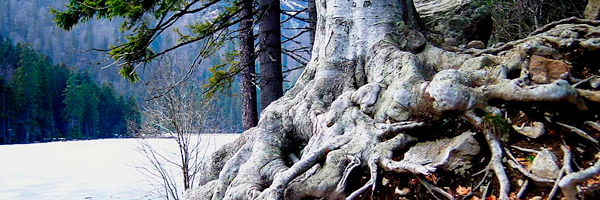Company
Staff and automation
When Johannes Gimmel took over the tannery from the Stoffel family in 1848, he mostly carried out all the work by himself and only a horse-whim was available as a machine in those days. A steady course of development gradually began and continual investments in new machines were made, step by step, to ease or even replace manual labor. In the same way, the horse-whim was replaced by a secondhand Saurer locomobile, to be followed later by modern tanning machines. Similarly, the buildings at the old site were upgraded and converted. Eventually, in 1973, ideal conditions for the future were created with modern production plants on the outskirts of Arbon. From the previous one-man operation, staff numbers rose to 60 in the 1950s and 1960s. Today, Max Gimmel AG employs 37 people, 31 of whom work in production. Albeit with fewer staff, more leather than ever before can still be produced thanks to modern machinery. There are natural limits to rationalization imposed by the anatomy of the animal and thus also by the shape of the hides. Every hide must still be manually fed into a machine, and for this reason the staff play a critical part in production.
Over the course of time
The first generations of the Gimmel family produced leather for articles of daily use that were in great demand even in those days. Tanneries were established as handicraft businesses in all the larger settlements along the shores of lakes and banks of rivers. Up to the present day, water has remained the most important resource for tanners. In these places, road names remind us of the tanners’ districts to this very day. Leather for harnesses and also for driving belts gained enormous importance but then vanished almost completely with growing industrialization and (auto) mobility. At all times, the army which demanded good material for its equipment was a major customer of the tanneries. This circumstance helped the tanners to adopt an anti-cyclical behavior i.e. to be independent of seasonal patterns.
Between the two world-wars
Indeed, for the Gimmel Tannery, the outbreak of World War I was the reason why the third generation was not able to emigrate to Central America. The voyage from Hamburg had been scheduled for August 7 and on August 1, World War I broke out. During the war, hard work was again the order of the day and thoughts of emigrating were no longer of first importance. After the war, military orders again declined. Leather for travel articles and car seats was increasingly in demand. These leathers, on the other hand, required completely new procedures where coatings were applied to leather for the first time.
New materials replace leather
This was the start of a completely new technology which underwent rapid advances and has retained its central role to the present day. In the 1950s, polymer chemistry became tremendously important with new plastic materials. Plastic soles, synthetic leather bags and cases and synthetic leather seat covers greatly affected the sales of the leather industry. Leather took on a completely new significance and was used less and less as a material for daily use. Tanneries had to undergo an extreme process of adaptation. Of some 100 tanneries that still existed in Switzerland at the time of World War II, only three industrial companies or handicraft businesses have remained.
New emerging markets for leather
Only companies with modern facilities and dynamic flexibility to adjust to new situations have been able to survive and prevail in a market which has now become global. The Gimmel Tannery also had to follow changes in the market and attract new customers in the 1960s. The modern design of Scandinavian furniture changed the range of products in lifestyle sector. Seat covers required large pieces of leather and Gimmel Tannery was one of the fist tanneries worldwide to switch its entire production to upholstery leather, a niche that has retained its importance to this very day.
History teaches us …
History teaches us, however, that we cannot be content with this, considering the customer base already had to be changed completely three times in the past. We are very much aware of the fact that we have to keep an open mind in this respect in the future as well.

